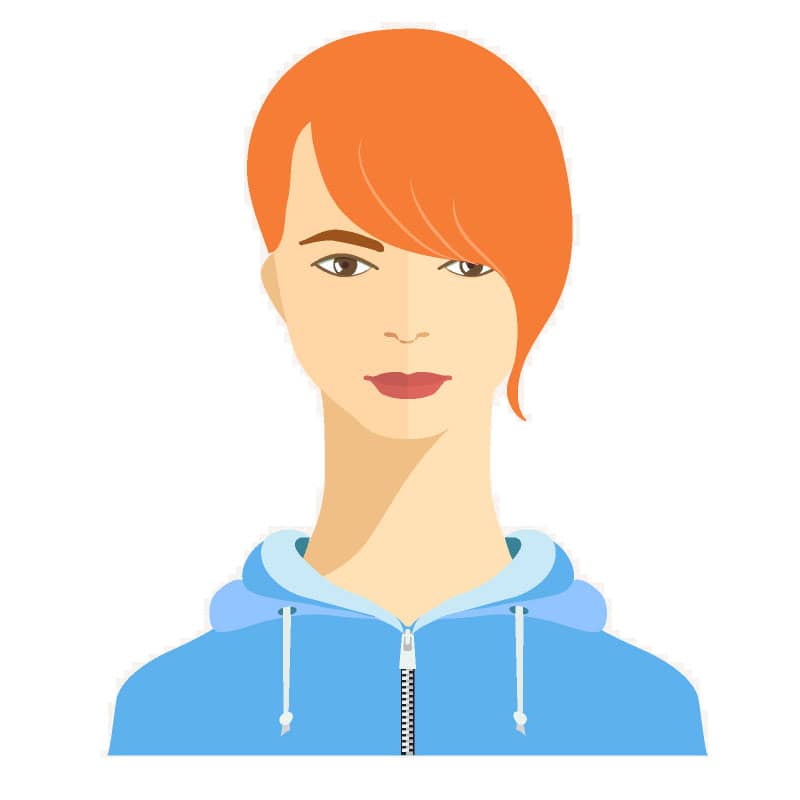
4-month-old baby (child) - development, diet, sleep, exercises, toys. See what it can do
The often-repeated question of when a baby will hold its head is answered in the 4th month. The child's movements are already coordinated and realized for a clear purpose. At the same time, motor skills continue to develop week by week. His appetite grows and with it also the effort to put in his mouth and taste everything possible. The child is not yet able to sit, but the 4-month-old baby on his stomach is already using his senses and movement to the full. The ideal scenario is if he sleeps a lot and cries little. Over the course of 16 weeks, the baby has grown and has an even greater desire to follow everything that is happening around him. His effort is to communicate more, mumbling replaces lively chatter and active laughter. Towards the end of the 4th month, restlessness and crying can foreshadow that even the first baby tooth is coming through.
The child begins to react more and more to stimuli from the environment. Thanks to the fact that he can coordinate his movements and actively communicates with chatter, various sounds and smiles, parents definitely get the feeling that the baby is doing everything consciously. In 4 months since coming from the hospital, the mother and the baby have already gotten used to each other perfectly and the mother has already identified with her role as a mother. There is no need to falsely expect that everything must go as planned and that the parent will get rid of some ailments as the weeks go by. Even a 4-month-old baby cries, doesn't want to sleep or poop. Others put everything in their mouths and sleep a lot. An ideal balance does not always exist. What can a 4-month-old baby do at this stage of growth?
What can a 4-month-old baby do?
Gross and fine motor skills are moving to the next level in the 4-month-old baby. However, we remind you once again that the individual characteristics are indicative and the slower progress and possible deviations may not indicate any complication. After all, psychomotor development is evaluated by the pediatrician himself during regular check-ups. A 4-month-old baby on his stomach can not only "herd horses" and keep his head up, but he can tilt it back and look up. He is already moving his head in all directions to a greater extent. The pectoral muscles are already more developed and when the head moves up, the chest itself rises, which is a great signal from the point of view of muscle development.
Most babies are already able to move their head downwards when lying on their backs - the chin points to the chest and the baby follows its legs. The baby will roll onto its side without your help and even onto its stomach with help. The more skilled ones will gradually spin even without help. If a 4-month-old baby is not rolling, he still has time. Be sure not to practice sitting with the baby yet. Despite the fact that the baby holds the head and the spine straightens, there is still a forward bend, which is not suitable for the lumbar part and spine. The infant's grip becomes stronger and the effort to grasp objects is pronounced. Lying on his stomach, he reaches for objects within his reach. Thanks to the strengthened neck and back muscles, the baby is much more stable in the tummy position.
A phase begins in which the child tests everything with his mouth and puts not only his hands, but also toys and whatever he can reach into his mouth. There is no need to prevent the child from doing so, but pay attention to sufficient hygiene. Eye-hand coordination is so developed that a child can manipulate objects with the right grip. In addition, he observes his surroundings and perceives that you are holding objects. Eye coordination when fixing certain objects does not have to be perfect yet, and squinting is therefore natural. Eye coordination and the ability to fixate objects by sight should definitely develop by the 6th month.

Communication and the world through the eyes of a 4-month-old baby
A shift also occurs in the field of sensory perception. A baby perceives the world differently. He can distinguish faces much more clearly and also perceives their facial expressions. The baby's visual memory is developing. He can recognize the face of his mother, father, and grandmother, and he can react dismissively or with surprise or a frown to strangers' faces. Color vision is also fully developed. Being interested in what is happening around him, the child reacts very intensively to various stimuli. Nonsensical mumbling is already replaced by chatter, squealing, and often even some screamed syllables come out of the baby's mouth. Crying is therefore far from being the only communication tool. When an infant feels alone, it attracts attention by screaming and cooing. By making guttural sounds and inconspicuous voices, some children present themselves really intensely. He willingly "expresses" his needs by shouting or jumping, as well as when he is happy.
A child likes to have his hands full with "work", so it is advisable to stimulate his motor skills and perception by putting toys, rattles in his hands, stroking, kissing or hugging him. Expect him to put a lot of them in his mouth, and slinkies will probably be everywhere. Support his voice by talking to him, talking to him, reading him fairy tales or saying nursery rhymes. At times, you may find yourself listening intently while you conduct a "one-sided dialogue" with them, waiting for their response. He will also try to repeat some sounds after you.
The 4-month-old baby is smiling more and more and reacts with a smile to the many stimuli he registers. Social development records progress, because a smile or a grimace is already a reaction and not a random expression. Crying is on the decline and the emotional bond with the child is getting stronger. Don't be afraid to carry the child in your arms, the world from a different perspective encourages his receptivity.
The child likes to look in the mirror. Why? It represents a form of play and entertainment for him. If you place the child on a mat and place a stable mirror opposite, he will observe his movements with astonishment. Hands, feet, facial expressions, he will start to touch individual parts of the body, and this will support the overall coordination of the body.

A 4-month-old baby does not want to suckle
In connection with the diet of infants in the 4th month, many parents believe that it is the right time to include complementary foods in the menu. However, it is not a rule. If a woman breastfeeds her child with breast milk, it is not necessary to introduce complementary foods. When to start solid foods is very individual. If the child is thriving and the weight of the 4-month-old baby corresponds to the development, eats regularly, does not show signs of dissatisfaction with the lack of nutrition and has no problems with digestion, breast milk can cover the nutritional needs of the baby up to 6 months. It is therefore advisable to start with solid foods only at the age of six months and it is not necessary earlier, while breastfeeding can be continued.
If the child receives artificial milk, it is recommended to start complementary feeding around the 4th to 5th month. Artificial formula will never contain such a rich spectrum of nutrients as breast milk. The infant's appetite increases, but the weight gains are not so high. If you always breastfeed your baby when he demands it, there is no need to consider introducing complementary foods.
And what to do if a 4-month-old baby does not want to suckle ? Usually, this problem appears in connection with artificial formula. In such a case, it is advisable to consider changing artificial milk or supplementing the diet with suitable infant teas. Alternatively, it is advisable to include side dishes in the menu. In the case of children fed with mother's milk, in some cases it happens that the child simply goes on strike during this period. It is advisable to try a different breastfeeding position or consult a lactation consultant. At the same time, it is still true that a woman may have a lactation crisis - the flow of milk in the breast is weaker and the child does not receive the necessary amount of food that it would like. However, this is a transitional period and it is important to breastfeed the baby as often as possible, not to stop breastfeeding.
Between the 4th and 6th months, infants should have typical digestive problems. Infant colic should subside, as well as unpleasant gastroesophageal reflux, which caused the child to always throw up a certain amount of milk after feeding and burping. If vomiting persists after feeding, it is better to contact a doctor.

Sleep and toys for a 4-month-old baby
The child's need for sleep is prolonged. If you're one of those parents lucky enough to have a 4-month-old baby who sleeps a lot, this is the ideal scenario. Although it is generally said that the rhythm of waking and sleeping is already stabilizing, again you would find countless exceptions. While at night the baby sleeps for approximately 10 hours, while you do not get rid of some of those breaks for feeding, during the day it is very awake and active. The daily sleep intervals are shortened - 2-4 times a day, while the sleep time during the day should not be more than 2 hours. Otherwise, a night's sleep may be disturbed. Parents often encounter the fact that the baby sleeps in short periods of 30 minutes or several times during the day.
For the development of his senses and motor skills, you can put toys made of different materials in the child's hands. Pay attention to small objects, because the need to put everything in the mouth and taste it is very common. Take care of hygiene in order to avoid the possible introduction of an infection into the oral cavity. Drooling and blowing bubbles really is a baby's superpower. Among the toys, those that emit melodies or move are also suitable. Ideal if they are brightly colored and catch the child's attention. Also, practice the position on your stomach with your child. Practice turning the baby from the position on the back to the tummy. Place objects in front of him that he will reach for. You can even reveal your right or left hand preference during this activity.

The most frequent questions - FAQ
Is your baby growing like water? At 4 months, he should be able to graze horses, control the movements of his head and hold it upright. He is much more active in communication, in addition to crying and humming, he already imitates some sounds, smiles and grimaces. It is more sensitive and the movements are more coordinated. What are your experiences with the development of a baby up to 4 months? Do you have any interesting observations? We will be happy if you share your advice, opinions and recommendations with us. All you have to do is join the discussion under the article.
What can a 4-month-old baby eat?
How often to breastfeed a 4-month-old baby?
How to carry a 4-month-old baby?
Gallery
Pridať komentár












